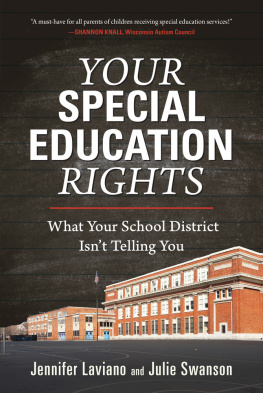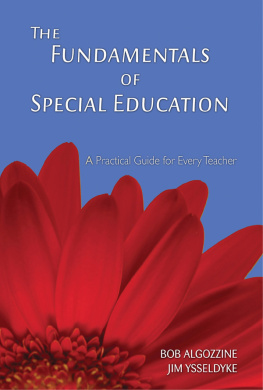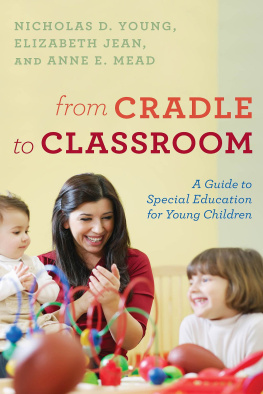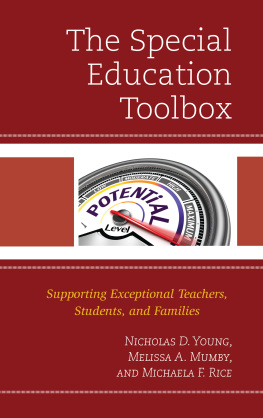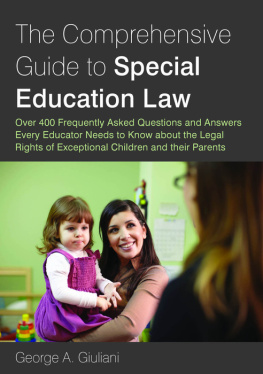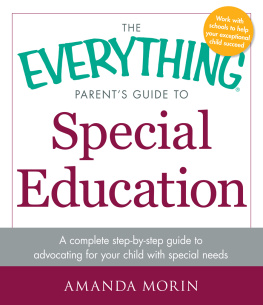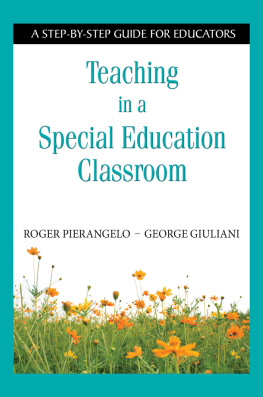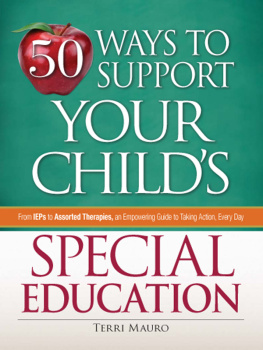Copyright 2017 by Jennifer Laviano and Julie Swanson
All rights reserved. No part of this book may be reproduced in any manner without the express written consent of the publisher, except in the case of brief excerpts in critical reviews or articles. All inquiries should be addressed to Skyhorse Publishing, 307 West 36th Street, 11th Floor, New York, NY 10018.
Skyhorse Publishing books may be purchased in bulk at special discounts for sales promotion, corporate gifts, fund-raising, or educational purposes. Special editions can also be created to specifications. For details, contact the Special Sales Department, Skyhorse Publishing, 307 West 36th Street, 11th Floor, New York, NY 10018 or .
Skyhorse and Skyhorse Publishing are registered trademarks of Skyhorse Publishing, Inc., a Delaware corporation.
Visit our website at www.skyhorsepublishing.com.
10 9 8 7 6 5 4 3 2 1
Library of Congress Cataloging-in-Publication Data is available on file.
Cover design by Rain Saukas
Front cover illustration: iStockphoto
Print ISBN: 978-1-5107-1939-2
Ebook ISBN: 978-1-5107-1940-8
Printed in the United States of America
Most people see what is, and never see what can be.
Albert Einstein
This book is dedicated to those who see what their child can be.
Contents
A Note from the Authors
W eve written this book primarily for parents. However, one of the things we always say when we present to parent groups is this: We know were jaded. Parents often hire us when their child is in a crisis, or when their relationship with their childs school has reached a point where they no longer feel able to communicate without a professional advocate or attorney. That is not the norm! Given that, we would like to say a word to educators and administrators who are reading this book. We came close to naming this book Your Special Education Rights: What You Dont Know Can Hurt You . However, we felt that title placed the blame for not understanding their rights on parents, which we did not think was entirely fair. After all, Congress requires school districts to inform parents of their rights. We, therefore, then came awfully close to the title: Your Special Education Rights: What Your School District Wont Tell You . But that seemed too harsh as well. We ultimately decided to emphasize that schools may not tell parents certain things, rather than assuming that they wont.
We realize that highlighting what school districts might not tell parents may have the unintended consequence of leaving educators and administrators with the impression that we have written this book to bash school districts. We did not. In fact, we are both products of public education, and we believe in it, strongly! We recognize that the vast majority of people who choose to become teachers do so because they love children and care about education. We believe that most administrators are trying their best under enormous financial, political, and legal pressure. Our sincere hope is that our candid account does not alienate educators and administrators, but rather raises awareness of how difficult it can be to navigate the special education system. Our goal is empowerment of parents so that they can work shoulder to shoulder with their school districts on behalf of their child, rather than against them.
In addition to wanting you to consider that our perspective is one that is very much colored by the unfortunate nature of the cases in which we are involved, it is imperative that you read this book knowing that, in the law, and in the world in which we live, things are constantly changing. As this book was heading to print, a number of events happened on the national scene that made us realize we would be remiss to allow the book to be published without addressing them. The 2016 election represents a major shift in the philosophy of the role that the federal government should play in education at both the executive and legislative branches. The Individuals with Disabilities Education Act (IDEA) and Section 504 of the Rehabilitation Act of 1973, the key federal protections for students with disabilities, are enforced through federal agencies and private actions by parents. How a dramatic change in these agencies will impact special education advocacy remains unknown. A renewed focus on states rights versus federal oversight, and an emphasis on vouchers in education, will change the landscape of special education in ways that are worrisome to many.
Further, on March 22, 2017, the United States Supreme Court issued its ruling in the Endrew F. v. Douglas County School District case. Endrew F. is a student identified for special education services as a result of an autism spectrum disorder, whose parents removed him from a public school program they believed was inappropriate and placed him in a private special education school for which they sought reimbursement. This was the first time in thirty-five years that the High Court had considered the question of what an appropriate program is under the IDEA, the federal law that requires that children who are identified as eligible to receive special education services as a result of their disabilities receive a free appropriate public education (FAPE) from their school districts annually. In striking down a Tenth Circuit decision holding that the IDEA requires that students receive educational benefit [that is] merely more than de minimis , the court found that the IDEA requires far more. In invoking the history of what led Congress to enact the IDEA to begin with in 1975, the Endrew F . court noted that a proper analysis of whether a childs Individualized Education Program (IEP) is appropriate under the law must consider the individual and unique needs of the child, and further must be focused on that students progress: A substantive standard not focused on student progress would do little to remedy the pervasive and tragic academic stagnation that prompted Congress to act. Citing the need for ambitious goals, and focusing on the need for individualization in the special education programming, the court held: When all is said and done, a student offered an educational program providing merely more than de minimis progress from year to year can hardly be said to have been offered an education at all. For children with disabilities, receiving instruction that aims so low would be tantamount to sitting idly awaiting the time when they were old enough to drop out. Rowley , 458 US, at 179. The IDEA demands more. It requires an educational program reasonably calculated to enable a child to make progress appropriate in light of the childs circumstances.
How this landmark decision will be interpreted by hearing officers and courts remains to be seen. There does appear to be a consensus in the legal community that the decision marks a higher standard than the court had previously articulated, and that substandard education for children with disabilities does not pass legal muster. As importantly, the court continually brings the analysis back to focusing on the unique needs of the child in question.
Finally, we also think its worth saying a few words about the chapter we have included on Sandy Hook. We debated it between ourselves and with colleagues, friends, and our publisher. At no point did we want to be exploitative of the horror experienced by the families; in no way did we want to feed into a false perception that individuals with disabilities are inherently violent, dangerous, or unstable; and candidly, we didnt want to invite a controversial subject into a book that already reveals difficult truths about the inner workings of school systems.

